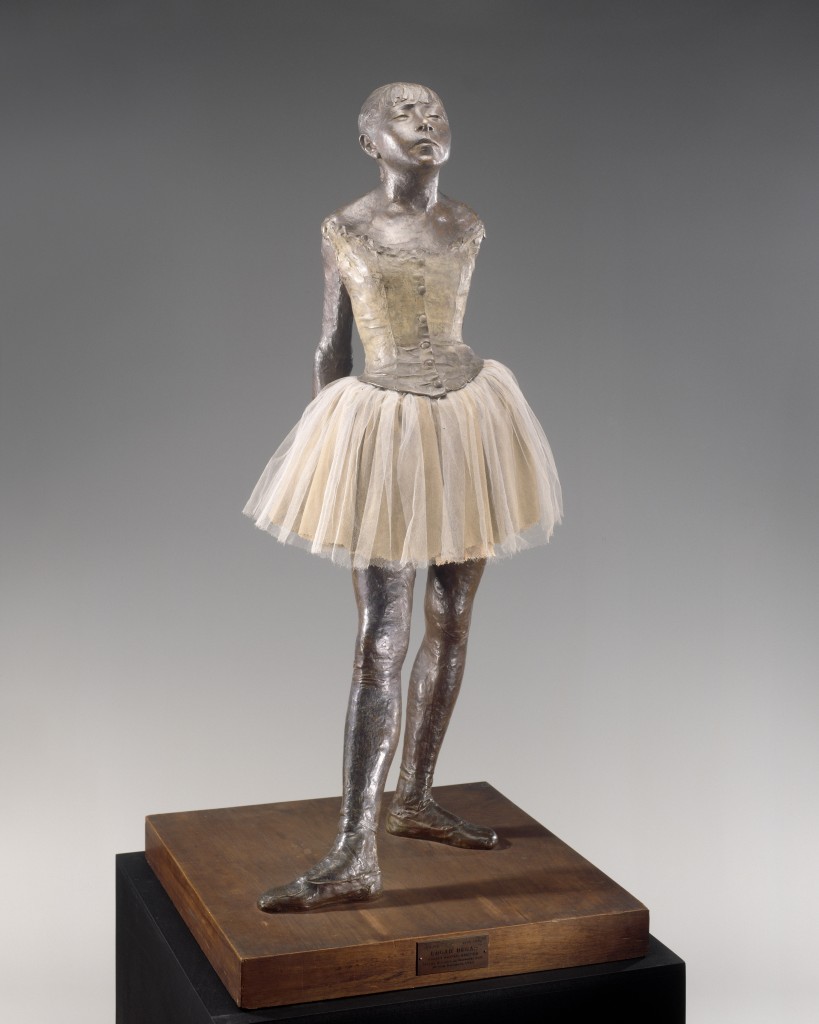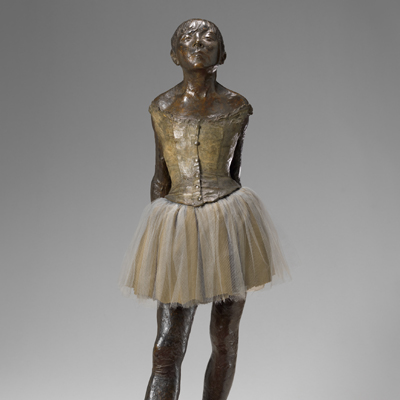
Born to a wealthy banking family in Paris in 1834, Hilaire-Germain-Edgar Degas began his studies at the Lycée Louis-Le-Grand at the age of eleven. After studying the classics and completing his baccalauréat in literature, Degas joined the ranks of the University of Paris Law school in 1853. He simultaneously pursued his art training, registering as a copyist at the Louvre. In 1855 he abandoned law school and was accepted to the Ecole des Beaux-Arts. His earliest work focused on history painting, but by 1865 he began to concentrate on scenes of modern Parisian life and leisure, including horse races, café-concerts, and the ballet.
Degas’ social stature played a significant role in his choice of subject matter. His enthusiasm for music and dance stemmed from his family, who was known to support the arts. The Paris Opera provided the perfect marriage of music and dance, and became an ideal setting and subject. In the late nineteenth century, the Opera was the place to see and be seen, and much of Paris’ upper class held an abonnement, or subscription, to one of three weekly performances. This privilege allowed one access to seating in the stalls and boxes, the wings of the stage, dancers’ dressing rooms, and the foyer de la danse, where abonnés mingled with the dancers.
While many of Degas’ works depict the performances, even more treat the ballet dancers behind the scenes and in rehearsal, showing his fascination with the complexity of the human form.
Degas modeled Little Dancer Aged Fourteen out of colored wax in 1880, but it wasn’t until 1922 when at least twenty-five bronze sculptures were cast posthumously by the Hébrard foundry at the request of the artist’s nieces and nephew. Though Degas sculpted throughout his mature career, this figure of Marie van Goethem, a young novice at the Paris Opera Ballet, was the only one he exhibited publicly in his lifetime, causing a sensation at the 1881 impressionist exhibition in Paris.
Originally exhibited like an anthropological specimen under a vitrine, and embellished with a muslin tutu, linen bodice, ballet slippers, and a real hair wig tied with a satin ribbon, this sculpture of a novice ballerina or “rat” standing in relaxed fourth position was described by critics as “ugly” and “a threat to society.” The realistic treatment of her face and the use of unorthodox materials highlighted his desire for naturalism as an artistic standard rather than idealization.
Much has been written on the Little Dancer—on her expression, on her position, on what she represented at the time. Degas’ sculpture continues to fascinate and engage audiences over a century later. Her posture and attitude are both defiant and enigmatic. The lowest “ballet rat” has been elevated to a position of importance.
NOMA will share this renowned work, on loan from the Virginia Museum of Fine Arts, with audiences in a newly created focus gallery this fall. A selection of related works from the museum’s permanent collection will be displayed alongside the Little Dancer, including a pastel drawing and a smaller bronze sculpture of another dancer putting on her slipper. This display approach allows for one or a few works of art to be presented and explored in depth.

Little Dancer
1880, Cast in 1922
Hilaire Germain Edgar Degas
Bronze with net tutu and hair ribbon
38½"H x 14½"W x 14¼"D
Virginia Museum of Fine Arts, Richmond. State Operating Fund and the Art Lovers’ Society. Photo: Katherine Wetzel © Virginia Museum of Fine Arts

Dancer in Green
1878
Hilaire Germain Edgar Degas
Gift of Charles C. Henderson in memory of Nancy S. Henderson
Sponsors / Partners
The Virginia Museum of Fine Arts
